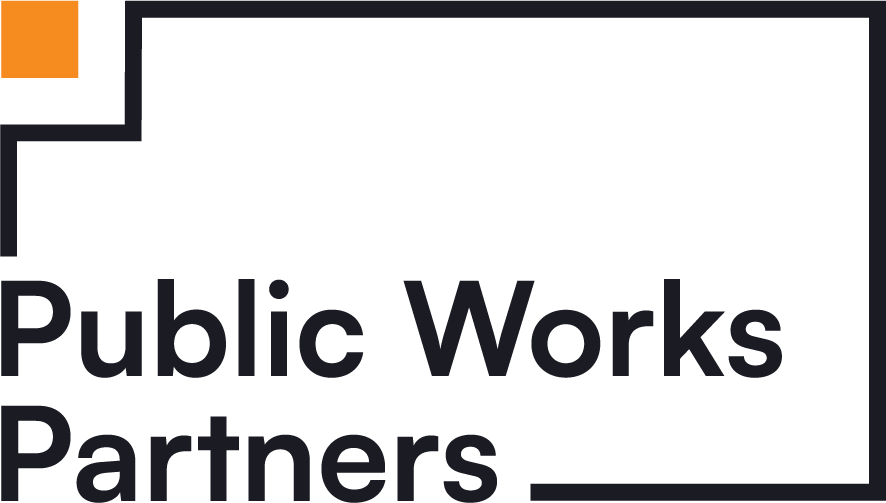In our previous post, “Unpacking the Layers of the COVID-19 Stimulus” we dissected some of the considerations and components of the American Rescue Plan (ARP), the $1.9 trillion stimulus package that was passed in March of 2021. One specific allocation of the ARP is roughly $350 billion in funding to state and local governments. Of that allocation, 56% is set aside for states and 35% for local governments.
As we move into a period of recovery, we can expect these new resources to soon hit the coffers of state and local governments. These recovery funds will provide administering governments an opportunity to target resources, scale national programs, and tailor existing or new programs to address the pressing needs of the public.
One way state and local governments can begin to spend down these funds is through the proactive planning and design of grant and loan programs that can spur local economic activity and increase quality of life. Below, we detail strategies for a comprehensive approach to designing grant and loan programs that can leverage anticipated funding from the ARP. You can also download our infographic to use as a guide as you think through your program design.
Public Works Partners_Grant and loan programs timelineTheory of Change
As you begin the process of designing a grant or loan program, look at the bigger picture to figure out where you are starting from and where you want to go. When designing a new program, the first step should be to develop a roadmap that establishes a pathway to get from point A to point B, as well as the resources needed to achieve your goals. This process is commonly referred to as a “Theory of Change”. A Theory of Change is “a rigorous yet participatory process whereby groups and project stakeholders identify the conditions they believe have to unfold for their long-term goals to be met”.
This approach gives way to an intentional form of planning that can set a catalytic social change program in motion. It helps to connect planned activities or interventions with short, medium, and long-term goals, which can serve as a compass throughout a program’s implementation phase and inform your selection of measurable indicators prior to the rollout of your program. A Theory of Change will come full circle when the time comes to evaluate your program outcomes and impact.
This is one recommended approach, but other forms of logic models can achieve similar outcomes.
Target Population
Once a roadmap has been created, the next step is to develop a strategic plan for your program design. A key component of this process will be defining your target population.
The COVID-19 Pandemic has had extensive impacts across the board. However, some populations have been harder hit than others and some challenges are more complex than others. For the purposes of ARP funding, understanding the impact of the pandemic on different populations, as well as the new barriers created by the pandemic, will be critical. Now is the time to ask yourself—who are the people typically engaging with your services? How can you support these people as they recover from the pandemic? Are there people who should be engaged, but who typically do not participate? How do you ensure that the barriers to entry for your programs promote accessibility and equity?
These are a few probing questions that may help you determine who the targeted beneficiaries of your program design are. This should be in alignment with your Theory of Change.
Required Resources
Sometimes this step can be overlooked in the program design process, but it is a key component of successful program operation. Once you have determined who your intended implementation partners are (e.g., nonprofits, community-based development organizations, institutions, community health centers, etc.), consider what kind of additional support and resources these entities would need to be successful.
Resources can vary based on the program activities you have defined. This can include translation services, training on data collection, support on contracting with a government agency, etc. If these are not resources that you have the expertise or capacity to provide, then this will likely impact the breadth of potential implementation partners you consider targeting.
Funding Streams
Managing funds from multiple or even a single source is no small feat. Depending on your funding source, reporting requirements can vary, payment cycles can differ, and spending requirements may be either liberal or prescriptive. For these reasons, it is important to identify the funding stream(s) and the expectations inherent in them at the onset of the design phase.
Understanding the advantages and limitations of your funding stream(s) will inform program activities and help delineate what achievable outcomes may materialize. If your program is being funded by a single stream and you are finding that there is a) an overwhelming number of limitations on how the funds can be spent or b) you would like to explore ways to augment program impact, then consider this slight deviation to your approach: look into diversifying your funding stream(s). For example, use a more rigid funding stream for staff time or other essential expenses. Alternatively, seek creative partnerships to address more complex issues or to pilot new ideas. Not only does this lend itself to additional funds, but unique partnerships also lead to innovation.
According to some general guidelines that have been shared on the Coronavirus State and Local Fiscal Recovery Funds, it seems likely that the funds made available to state and local governments will be flexible, and their ultimate uses are left to the discretion of administering governments. However, these approaches can still be applied for long-term planning to potentially continue these programs once the initial funding has been exhausted.
Program Timeline and Funding Period
Based on the intended outcomes and impacts that have been defined for your program, evaluate how much time would be needed to realistically accomplish those results. Would it be six months, one year, or multiple years? How does the funding period dovetail with the time frame needed to reach your desired results? Do these funds roll over from year to year?
These should all be determining factors in your program design and will bring you closer to managing time, expectations, and achieving desired outcomes and impacts. According to the National Law Review, ARP Coronavirus State and Local Fiscal Recovery Funds will likely be available until 2024. As we await more information on how these funds can be utilized between now and 2024, these are some other concepts you can get ahead of.
- How can this extended timeline be optimized to increase impact?
- What types of sustainability models can be deployed throughout this time to shore up other resources to continue critical programs beyond 2024?
Program Management
Program management is a critical aspect of all program development and execution. Having a program manager (or managers) will ensure that resources are managed, risks are monitored, and projects are moving according to the planned timeline. However, while many can see the value add of a program manager, state and local governments do not always have the resources to hire or allocate existing staff time for new program development. If you find that a situation like this applies to you consider the following:
- Build on or alter an existing program the serves the immediate needs of you target population while remaining within the permissible uses of your funding source.
- See if there is an option to utilize your funding source to bring on new staff either part-time, full-time, or on a temporary contract.
Conclusion
The ARP represents an exciting opportunity to build programs that directly benefit the populations hardest hit by the pandemic. The flexibility of the funding, as well as the size of the commitment, allows for a large degree of innovation and creativity. Through the design of thoughtful grant and loan programs, organizations can sponsor initiatives that have measurable and long-lasting impacts on their communities. Public Works is hopeful that this will support the creation and enhancement of critical human service programs.
Public Works is a leader in designing thoughtful programs that effectively navigate complex funding requirements and stakeholder needs to increase our clients’ impact. We support the development of strategic plans, measure impact, and design business plans so that our clients can focus on what matters most: building stronger communities. If you’re interested in diving into this topic even further, keep an eye out for our future blog posts from the Emergency Management & Planning team, which will include topics like needs assessments, program evaluation and success, and measuring impact.





